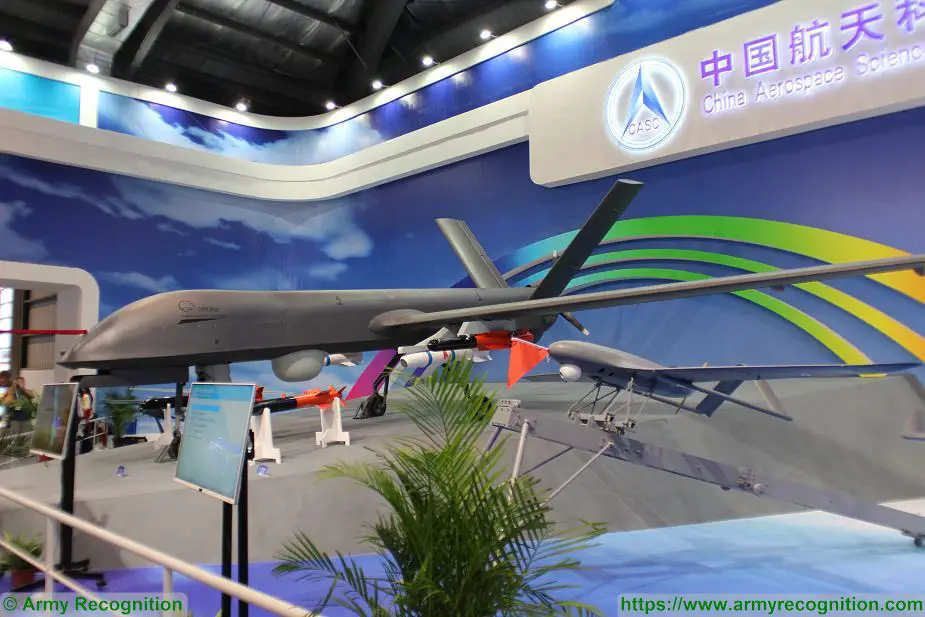The Caihong (Rainbow) CH-4 drone has successfully completed a live-ammunition 6-day bombing test under extreme environmental conditions (including blizzards and darkness) in Northwest China, said the Beijing Aerospace Propulsion Institute (No. 11 Institute) under the China Aerospace Science and Technology Corporation (CASC) on January 31.
 CH-4 Caihong (Rainbow) UAV at Zhuhai Airshow (Picture source: Air Recognition)
CH-4 Caihong (Rainbow) UAV at Zhuhai Airshow (Picture source: Air Recognition)
The effectiveness of all guided weapons, either laser- or satellite- guided, can be seriously affected by weather conditions such as smog or jamming by the enemy. However, the CH-4 drone has demonstrated it can surmount these problems. The new technologies successfully tested on the drone will be applied to the next generation of CH-4.
Thanks to its multiple mount points design, the CH-4 can carry various weapons and shoot different types of guided missiles under different weather conditions, meeting the standards of a surgical strike. For example, it can guide 50-kilogram cluster bombs in order to effectively complete missions including regional blockades and attacks on enemy airports. The 50-kilogram satellite-guided bombs can also deal a deadly blow on the enemy position from higher airspace, while the 100-kilogram satellite-guided weapon can launch surprise attacks on targets from more than 10 kilometers away.
China's CH series drones have been sold to more than ten armies, namely Pakistan and Turkmenistan, making it the largest drone family the country has exported so far.
Beside the now “classic” CH-4, China's solar UAV, the country's first near-space solar drone, completed a successful flight at an altitude of 20 km in June 2017. Near space, which lies 20 to 100 km above sea level, contains thin air that reduces the performance of traditional fuel-powered aircraft engines. But solar drones are theoretically able to fly continuously for months or even longer in the future, said Li Guangjia, director of the project. With a wingspan of 45 meters and equipped with solar panels, the new drone boasts a high cost efficiency as it does not require refueling during long-term missions.
As expected, the solar drone will be able to perform somehow like a satellite: it has the ability to supplant some functions of telecommunication satellites in providing data relay services. It is also expected to be used as an airborne mobile Wi-Fi hub to provide convenient mobile telecommunication and Internet access for remote areas and islands, saving on the huge construction and maintenance costs involved in traditional communication means.






















